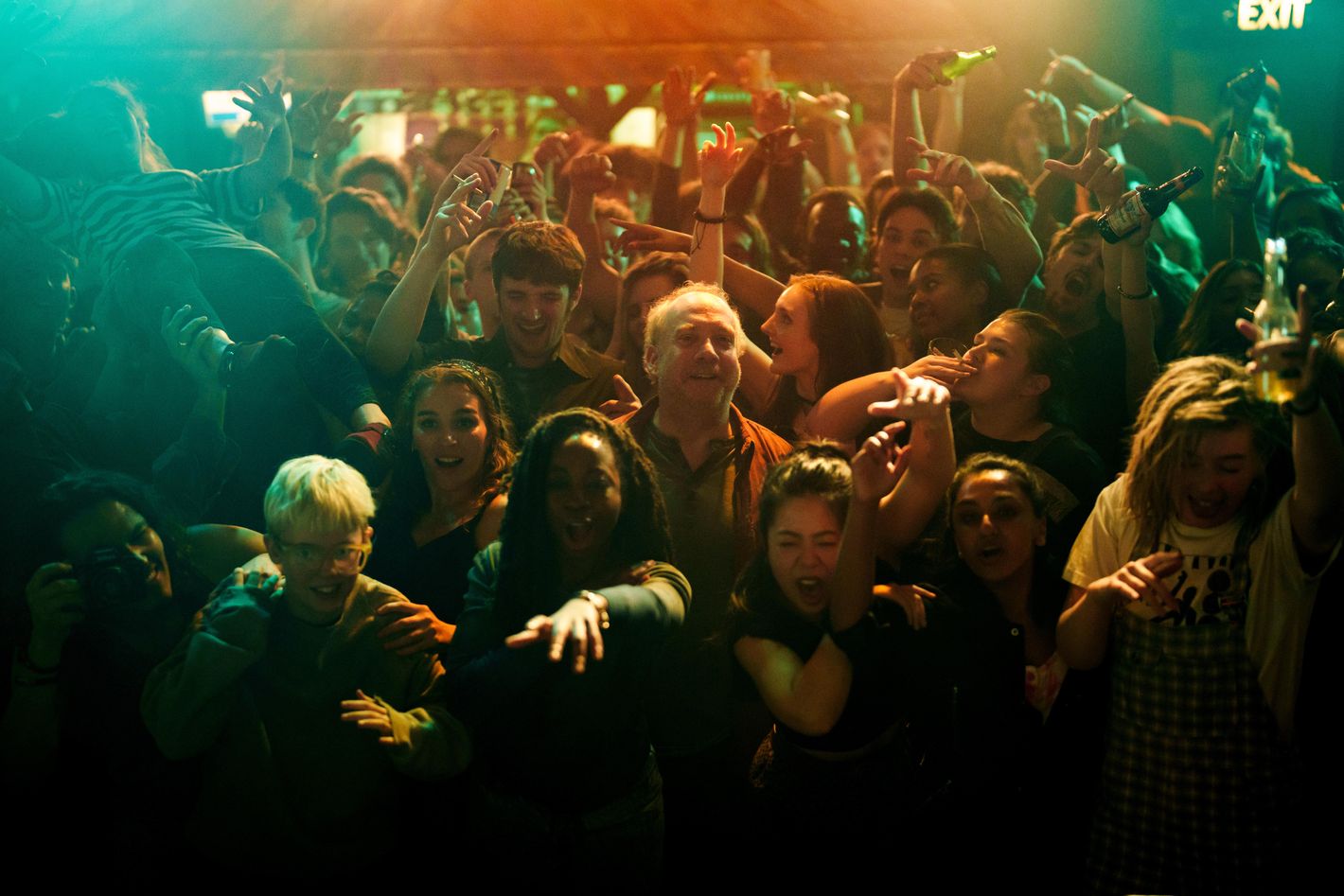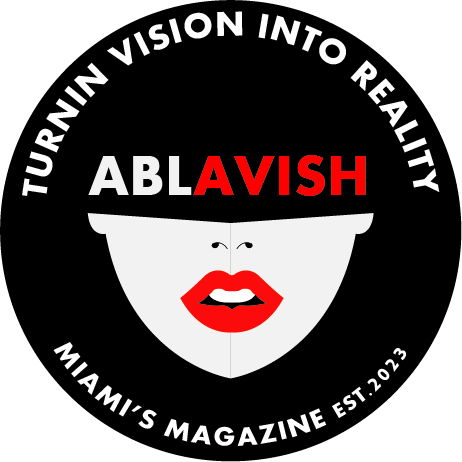

What if there were a service that could create immersive memorials for when a loved one dies? It’s not such a crazy idea; people are already attempting versions of this. But the technology we see Phillip (Paul Giamatti) try out in “Eulogy” is on a whole other level. Just by concentrating on memories of his late ex-girlfriend Carol, he can help generate a virtual presentation that will be watched by everyone at her funeral — a project that all of them had a hand in. It’s a lovely, communal way of celebrating a life.
But this episode isn’t so much about the end product. It’s about watching Phillip and his AI-generated Guide (Patsy Ferran) go through the process of curating the material, diving deep into his relationship history and where it went wrong with Carol. When the company Eulogy first contacts Phillip at the home he inherited in Cape Cod, he’s a little reluctant to engage; the brutal end of their three-year relationship left a wound that has calcified over the years, if not fully healed. It doesn’t seem like he has been with anyone since in any serious way.
Even if Phillip still isn’t fully over it, though, the years have helped break down the painful memories; he can barely even picture Carol anymore and only has a few photos of her left, none of which show her face. Still, those photos are helpful for providing the Guide context. With the small disc on Phillip’s head, he can actually enter these photographs and walk around with the Guide as a physical being at his side.
Most of the episode is technically a two-hander, but Giamatti is the obvious star of the show, conveying so much resentment, sorrow, and love in every expression. He’s the ideal actor for this material, gifted at letting the character’s unlikable qualities shine through while making us feel for him. There’s such a sense of interiority with Phillip, and he manages to invest us in this doomed relationship without us even meeting Carol personally.
The first photo was taken on the day Phillip and Carol met. They’re chatting during a rooftop barbecue at the Coop, a co-op for messy young artists and musicians that existed in the late eighties and early nineties. Carol has an engagement ring on her finger, which suggests she was once engaged and underplayed the seriousness of the relationship to Phillip because she was interested in him. He didn’t know that, though. He’s still learning new things about her.
I’ve had issues with Black Mirror’s constant focus on AI as of late, but here the tech is actually well thought out and realistic. AI is powerful enough to sharpen parts of the images and fuse them with his own vague recollection to create this three-dimensional world he can poke around, but it’s not capable of filling in data that doesn’t exist. In that first photo, for example, stepping around to see Carol’s face doesn’t work; it shows up in unnerving, geometric boxiness, unable to reproduce the details that weren’t shown (and that he doesn’t quite remember).
The second photo was also taken at the Coop. Neither Phillip nor Carol are in the photo, but entering it helps him remember nervously flirting down the hall and spending that night with her, especially with the aid of an old record to jog his memory. And then the third and final photo shows him standing in the hallway outside her bedroom, watching her practice a cello piece she composed.
It turns out there’s a reason Phillip doesn’t have any actual photos that show Carol’s face; he scratched or cut it out of all of them, effectively erasing her memory without erasing the pain of losing her. (Needless to say, the two did not keep in touch.) But there’s still plenty to dissect in the images that remain, like the band the couple formed while they were living together. The band found a following but didn’t fully catch on, with Carol playing the keyboard because the cello apparently didn’t fit their sound. The Guide not-so-subtly accuses Phillip of ignoring Carol’s wishes, in this scenario and others; the cello was important enough to Carol that she taught it to her daughter.
It becomes clear, over the course of this episode, that this is one of the issues that tore them apart: Phillip was so focused on himself and his feelings that he couldn’t truly see Carol. (And now he literally can’t see her. Funny how that works.) He speaks about her with scorn while she sits frozen next to another dude at a Halloween party in 1991 — how dare she have the gall to flirt so openly while her boyfriend is right there? — but then downplays his own mistakes, like flirting with a coworker named Emma at the Coop. Both Phillip and Carol could be jealous people, but Phillip is the first one who actually cheated, hooking up with Emma on his own birthday while Carol played in the pit for Phantom of the Opera in London. When she called him that night to wish him a happy birthday and Emma answered, they had a blowout screaming match where both crossed the line.
But it wasn’t until Phillip’s visit to London that everything really fell apart. He made the mistake of papering over all the issues in their relationship by proposing to her at dinner, resulting in a long and deeply uncomfortable silence. (It’s a credit to Giamatti and the writing that we can picture the scene so vividly without seeing it actually play out.) In the end, she just walked out, leaving her would-be fiancé there to chug champagne and feel sorry for himself.
Here’s where we get the twist of the episode, which I really should’ve seen coming: The Guide was actually trained on Carol’s daughter, Kelly, the result of an orchestra dalliance that happened after Phillip’s slip-up with Emma. She was chosen by the family as an avatar for the memorial curation so “Kelly” could choose what to include without the pain and labor of sorting through these memories herself. She only met her dad a handful of times, and he eventually died of Covid. She never knew most of the details of the real love story in her mom’s life.
But there’s an even more devastating reveal in store. Phillip finds an old disposable camera from that New York trip and takes the film to get developed, finding only one nothing photo of the hotel room he trashed. Looking closer inside the world of the photo, though, the Guide sees an envelope addressed to “Philly,” possibly a letter of explanation from Carol he was meant to find. Leaving the photo world, Phillip scrambles and finds the note, shoved into the middle of some stuff the maid tidied up. (That maid is the real villain of this story.)
The heartbreaking note reveals that Carol did want to stay with him; she kept the pregnancy news to herself, not knowing how Phillip would take it, and truly didn’t know how to respond to his proposal at dinner. If he’s still interested in being with her, the note says, he should meet her at the stage door tomorrow after her matinee.
It’s hard to overstate the impact such a realization would have, especially to somebody who has remained prideful and alone all these years. What really moves me about the ending of “Eulogy,” though, isn’t the easy, tear-jerking twist. It’s what happens after revisiting all this agony from his past, after feeling the overwhelming weight of a life-altering missed opportunity. Returning to that hallway photo, he stands in the doorway in place of his younger self, watching Carol play cello from the same vantage point. “Let’s see her,” he says while playing the corresponding cassette tape to hear the music. The camera pans slowly — we see someone in a chair, her long hair obscuring her face, but then she turns and notices Phillip and laughs while he smiles tearfully. Long ago, sick with love and grief and anger, all this man wanted was to never see or think about this woman again. Now, all he wants is to see her face.
Final Reflections
• The Guide’s editorializing sometimes feels like a tad much for an AI in this role, like when she tells Phillip that Carol “had a point” in asking him to set down his beer for a photo. But I suppose that’s mostly just foreshadowing of the reveal that she’s based on Carol’s daughter and has a personal stake in all this (though, again, she isn’t actually a real person).
• Nice effect adding the blue into a black-and-white world when Phillip remembers the color Carol was painting the walls.
• I also love the image of Phillip and the Guide entering the magazine spread about the restaurant where he proposed, stepping around the floating text.
• One of, if not Giamatti’s best moment in the episode: trying desperately to get his fingers under the edge of the envelope in the photo, yet totally unable to. There’s just something so nakedly vulnerable about the way he pleads for something he knows he can’t have.
• In the end, we see Phillip attend the funeral, after all, getting a nod from Kelly while she plays the cello piece her mother composed. But these two people have technically never met. How much does Kelly know about him in this moment, and does it come from her mom or from whatever memories he lent for the memorial?
Related

Latest News
For Sale! 2016 Sea Ray 350 Sundancer – $180,000
Reel Deal Yacht is pleased to feature a meticulously maintained 2016 Sea...
Exclusive Fine Art Partnerships: Pierre Emmanuel Martin
Lemieux et Cie and Pierre Emmanuel Martin: A Harmonious Collaboration in Fine...
A Comprehensive Guide to the White Isle
Ibiza: The Vibrant Heart of the Balearics in 2024 Ibiza, the sun-kissed...
Roschman Sells Boathouse Marine Center to BlueWater for $16 Million
© Copyright – autocontently.com
Man United seals spectacular comeback to beat Lyon 5-4 and advance to Europa League semifinals
Manchester United’s season isn’t done yet. On a night of high drama...














Leave a comment